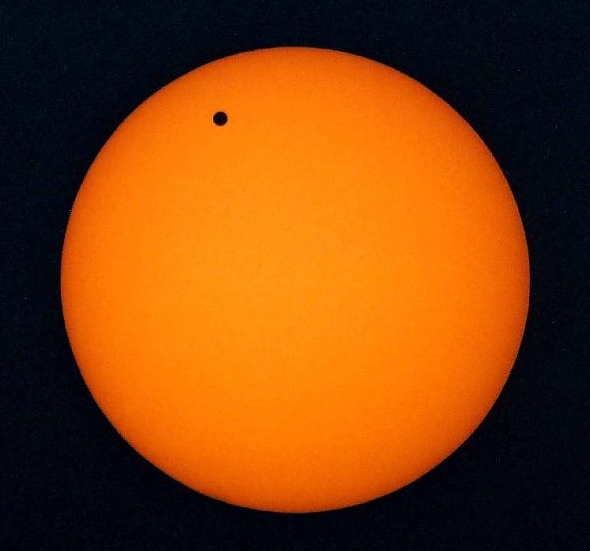Partial Lunar Eclipse
Tomorrow there is actually a transit of Venus across the sun that won't occur again in our lifetime! Australians are in a good position to see this rare event that won't occur again until 2117. Because Venus is such a large planet its transit across the sun will be more impressive to watch than the smaller and more common transit of other planets like Mercury. So get your sunglasses on tomorrow morning and have a look!
A planet transit across the sun
All this talk about transit and eclipses got me interested in finding out just how rare these sights are and what is the difference between the many different eclipses, transits, etc.Well according to (Earthsky, 2012) there are about seven eclipses per year. Some, like the one witnesses last night are only partial eclipses, but there are also lunar, solar and total eclipses too. Of course where someone is located on the planet has a lot to do with whether these events can be seen. Different eclipses can only be seen in certain parts of the world. For Australians we are lucky to enough to be able to see two eclipses this year. One was last night night and the next is a penumberal eclipse on the 28 November (Earthsky, 2012). Penumberal eclipses are unfortunately deemed the least impressive of the eclipses with many people unable to see them with the naked eye. If you want to see the more impressive total lunar eclipse I'm afraid you're going to have to wait until April 2014 and then buy yourself a plane ticket over to North America.
References
Earthsky. 30 May 2012. The next eclipse is a partial eclipse of the moon. Retrieved from http://earthsky.org/


No comments:
Post a Comment